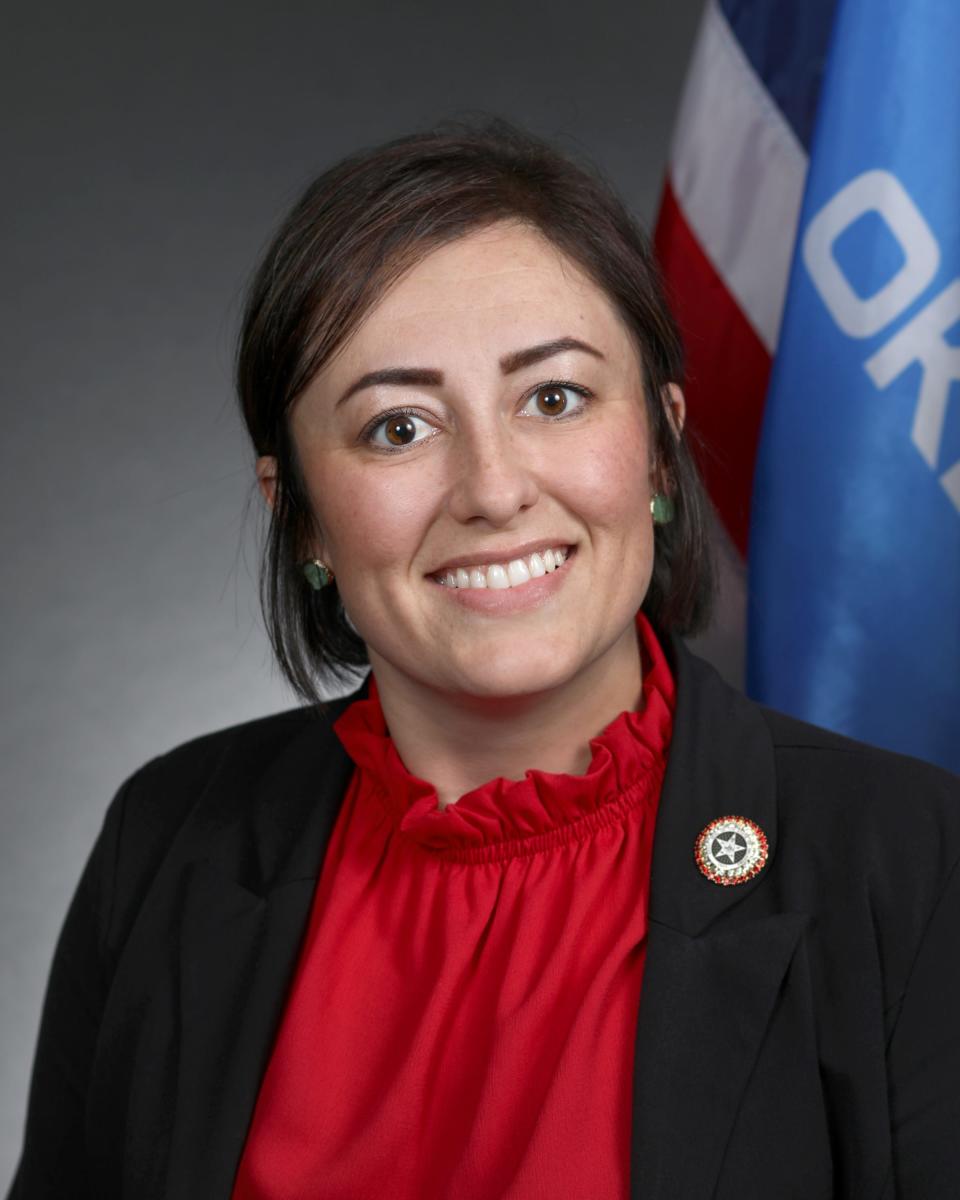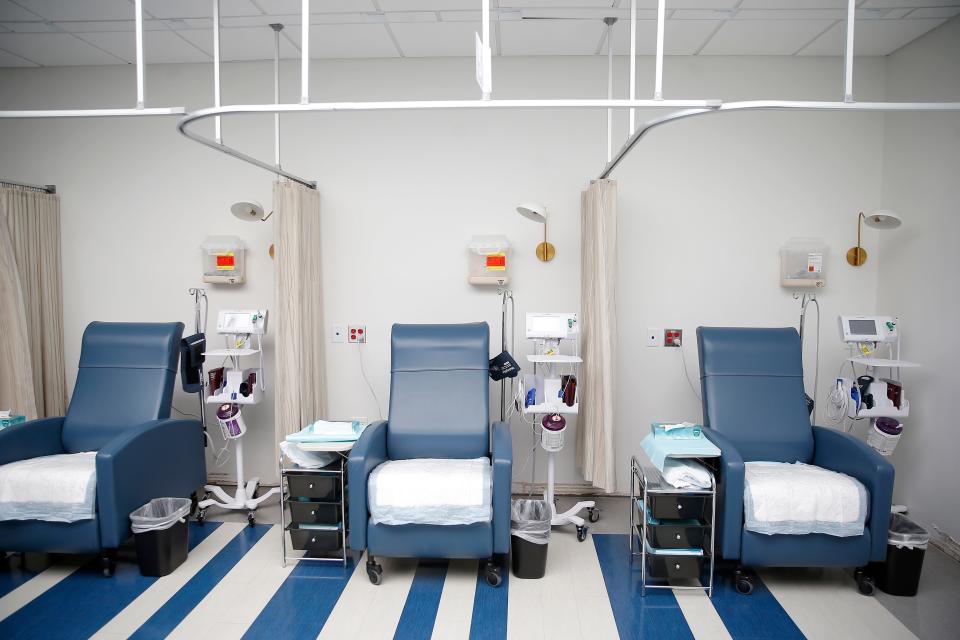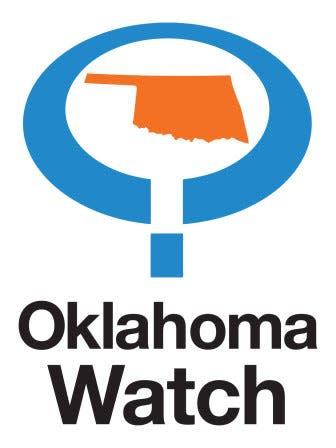Legislative study on improving Oklahoma women's conditions omits abortion
- Oops!Something went wrong.Please try again later.
Making Oklahoma a top-10 state in areas such as education, job growth and criminal justice reform was a central part of Kevin Stitt’s first campaign for governor. State Sen. Jessica Garvin recently made another top-10 proposition: What would it take to make the state more welcoming, equitable and safe for women?
When Garvin, R-Duncan, invited about a dozen experts to participate in an interim study on some of the biggest issues facing Oklahoma women last month, domestic violence prevalence, economic inequality and poor access to healthcare were included.

Abortion was not.
“This is a completely nonbiased, bipartisan and nonpartisan study, so for those of you who are wondering why we’re not addressing things like abortion, for example, that’s not what we’re here for,” Garvin announced at the start of an Oct. 24 interim study at the state Capitol. “We’re here not to discuss political sides, we’re here to discuss policy and facts and data surrounding issues that are facing women that we all can agree on.”
That lasted for about 30 minutes until the founder of two organizations supporting entrepreneurs and women in the workforce spoke up.
“I’m sorry, Sen. Garvin, but I don’t believe that abortion is a partisan issue,” Erika Lucas said, proceeding to discuss the connection between workplace equality and abortion access. “It’s just access to healthcare, and we cannot address women’s status in the state of Oklahoma without addressing that.”

In May, Gov. Kevin Stitt signed the nation’s strictest abortion ban at the time into effect before Roe v. Wade was overturned, putting a halt on all abortions in the state with few exceptions. There were 104,795 abortions performed between 2002 and 2021, according to the most recent Oklahoma State Department of Health report.
House Bill 4327, which Garvin co-sponsored, is now part of a patchwork of laws that outlaws all abortions in the state — with some making no exceptions for rape or incest.
Why abortion wasn't included in study
State lawmakers hold interim studies between legislative sessions to explore potential legislation and allow the public to learn more about related topics, said Angela Monson, who represented northeast Oklahoma City in the state House and Senate before becoming director of the Oklahoma Policy Institute. Legislators who call an interim study are likely to introduce a related bill in the next session, she said.

Since the end of the last legislative session, 82 study proposals have been approved for the House and 41 have been approved for the Senate. Among these was one highlighting concerns that sex education in schools undermines parental control, and another held by Garvin addressing a lack of childcare facilities in the state.
Monson said legislators sometimes held two or three meetings for an interim study when she served. Now, most last a half day.
“Interim studies used to educate, inform and allow for some debate and discourse,” Monson said. “Much more now, it’s just, ‘Okay, you come in, you say what you’re going to say, members ask a few questions and then you leave.’ There’s very little real conversation.”
In a phone conversation with Oklahoma Watch, Garvin said she’s had hours-long conversations with constituents and family about abortion. The interim study format didn’t provide the place for that, she said.
Garvin, one of 31 women in the Legislature and nine in the Senate for the most recent session, said she aims to address systemic issues that push some women to have abortions. Those factors include a lack of a stable home or job, inadequate childcare options and obstacles to accessing insurance, she said.
Some of the top reasons given by women who had abortions in 2020 were that having a baby would drastically change their life or career, that they’re not ready for a baby, or that they can’t afford a child or childcare, according to an Oklahoma State Department of Health report.
Garvin, a first-term senator elected in 2020, also said she’s representing a heavily anti-abortion district, and her job is to vote according to their values.
“There’s no way in the world that every single person in that room was going to have a two-hour conversation or a seven-minute conversation, and then all of a sudden we’re going to leave walking out of the room singing Kumbaya and we all say like, ‘Oh, yeah, we’re all on the same page now about abortion.’” Garvin said. “That wasn’t going to happen. So, I didn’t want to waste any time addressing something that I knew going into it.”
Panelist cites economic impacts
In her presentation, Lucas cited a report released by Rhia Ventures, an investment company focused on sexual, reproductive and maternal health, which linked women’s access to healthcare to their career trajectories.
The study indicated that women who cannot access abortion when they seek one are three times more likely to be unemployed and four times more likely to have a household income below the federal poverty line. It also showed that young men whose partners can’t access abortion are four times more likely to drop out of high school and twice as likely to drop out of college.
Access to healthcare also influences the jobs that working-age people choose to take, Lucas said. According to the study, 70% of women and 59% of men surveyed ages 18-44 would be discouraged from taking a job in a state with abortion restrictions. Department of Commerce director Brent Kisling, who was another speaker, said about 38,000 workers are needed to fill open positions in Oklahoma.
Dr. Mary Clarke, former president of the Oklahoma State Medical Association and another presenter, said she was glad that Lucas spoke up. Still, she said she’s unsure if having an in-depth discussion of abortion access during the study would have changed legislators’ minds.
“We have scientific experts and medical experts all the time giving this information, and the people who’ve made the laws that are pro-life don’t care about that scientific evidence,” Clarke said.
In September, a group of national and state healthcare organizations, including the Oklahoma State Medical Association, filed a amici curiae brief arguing that laws that criminalize abortions take away patient autonomy. Clarke said she doesn’t think women should stay silent on topics of abortion access, but they should wait for the right time and place.
“We have to work where we can at the moment and continue to change from the inside,” Clarke said. “And in Oklahoma, the only way we’re really going to do that is by putting women and women of color in our political system that makes the decisions.”
'Women's issues, everyone's issues'
Over the course of the two-hour discussion, experts discussed trends and possible solutions related to women’s healthcare, economic inequality, domestic violence and voter participation.
“Women’s issues are everyone’s issues,” Garvin said in her closing remarks. “These are not Democratic issues, these are not Republican issues.”
Here are some of the biggest takeaways from the presentations:
Women in Oklahoma continue to be paid less than women in other states.
Lucas called attention to a yearlong economic study done by the OSU Spears School of Business and nonprofit organization United WE. According to the study, the gender earnings gap in Oklahoma is larger than it is nationally. Between 2015 and 2019, Oklahoma women made 74.5 cents for every dollar that a man earned, while U.S. women made 80.8 cents per dollar.
The study also indicates that Oklahoma women ages 25-64 surveyed face poverty at a higher rate than both men in Oklahoma and women across the country. While 30 states and Washington, D.C., have base pay above the federal minimum wage, Oklahoma’s still sits at $7.25 an hour — and 60% of the employees who receive that pay are women. The authors of the study recommended increasing the state’s minimum wage.
State domestic violence rates from 2021 are expected to increase for the sixth year in a row.
Domestic abuse incidents tracked by the Oklahoma State Bureau of Investigation have trended upward since 2011, with a 13.2% increase between 2016 and 2020. Shelley Battles-Reichle, Ada Family Crisis Center executive director, said she expects a sharp increase in 2021 data because of the pandemic.
In 2020, 27,089 domestic abuse incidents were reported to state law enforcement, which was the highest count in at least 20 years. That same year, Battles-Reichle said 66 women were killed by men, and 67% of that total were the current or former romantic partner of their offender.
Oklahoma has consistently ranked among the states with the highest homicide rate of women being killed by men. It rose from having the eighth-highest ranking in 2019 to the second-highest ranking in 2020.
Limited healthcare access for pregnant women in Oklahoma leads to worse outcomes.
There are only 44 hospitals across the state where women can have a baby as of July, Clarke said. A map she provided indicates that many of those hospitals are concentrated in Oklahoma and Tulsa counties, with the rest spread throughout more rural counties.
Although Clarke said the hospitals might seem to be relatively spread out, the impacts are high for women who don’t have one near them. As an example, she said that pregnant women in the Panhandle have two options for delivery: drive three hours to the nearest Oklahoma hospital or go to another state, where many insurances won’t cover procedures.
But while delivery is one important aspect of pregnancy, healthcare for mothers doesn’t stop there, Clarke added.
The most recent Oklahoma State Department of Health data indicates that between 2018 and 2020, 25.2 mothers died for every 100,000 births. Across the nation, in 2020, 23.8 mothers died for every 100,000 births.
According to the most recent state Maternal Health, Morbidity and Mortality report, the top causes of pregnancy-related death between 2017 and 2019 were hemorrhages, infections and cardiovascular conditions. Clarke said various factors like limited prenatal care, high smoking and obesity rates, and prevalent premature birth could also influence the mortality rate.
“You have to support women from the ground up, support them during pregnancies, support them during delivery, support them after delivery and support those children until they are ready to go into the workforce as adults,” Clarke said.
Oklahoma Watch, at oklahomawatch.org, is a nonprofit, nonpartisan news organization that covers public-policy issues facing the state.
This article originally appeared on Oklahoman: Legislative study to boost Oklahoma women omitted abortion as topic

